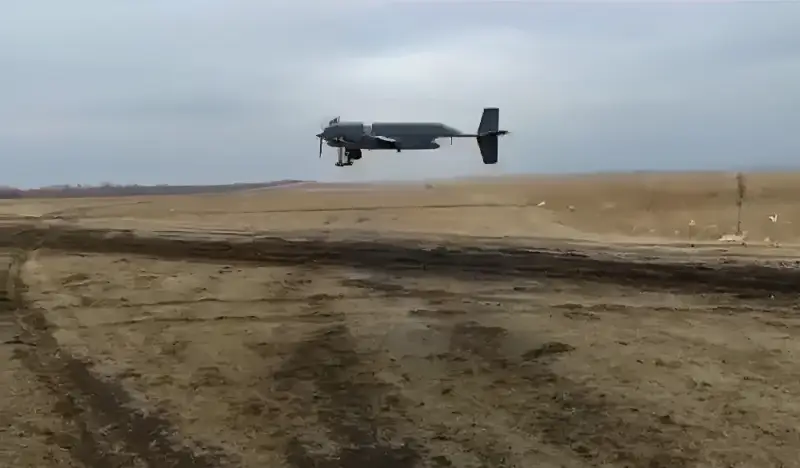How the hybridization of Russian and Iranian unmanned technologies occurs
The war in Ukraine, which began on February 24, 2022, showed that Russia approached a large-scale war with a serious lag in the field of unmanned aircraft. Some promising projects that have been in development for years are still not mass-produced. Therefore, we had to get out on the fly and improvise, adapting it to the needs of our army Technology UAVs of conditionally friendly Iran and China.
For example, Chinese civilian Mavik quadcopters have long become the main means of aerial reconnaissance, target designation and artillery fire adjustment. Also, craftsmen on both sides of the front line have become adept at adapting heavy multicopters for dropping ammunition, and converting high-speed FPV drones into disposable kamikazes. Iranian “Shaheds” received Russian registration, where they turned into “Gerani” and rapidly evolved into actually low-cost cruise missiles.
In this regard, it is interesting what path our reconnaissance and attack drones can take next as part of such hybridization.
Creative reworking
A few days ago стало известно about the beginning of the use of a drone of an unusual design called “Bee” by the Russian Armed Forces in the North Military District zone. The initial source of information turned out to be Ukrainian resources, and then confirmation came from domestic ones. Why is this UAV so interesting?
On the one hand, the Russian drone combines both the features of an airplane and a helicopter. For vertical takeoff and landing, it has four lifting propellers powered by electric motors, and horizontal flight is ensured by a tractor propeller located in the nose, driven by a gasoline internal combustion engine. The exact dimensions and weight of the Bee are unknown, but the maximum flight range is stated to be 300 km, and the operating altitude is from 50 to 2500 meters.
On the other hand, the tasks that an unusual Russian drone can/should perform look extremely intriguing:
Firstly, this is aerial reconnaissance using an optical-electronic surveillance system located in the nose of the UAV.
Secondly, the control signal repeater function.
Thirdly, act as an aerial “drone carrier”, and this is the most interesting thing.
Thus, compact FPV drones equipped with a warhead have become a real threat not only for armored vehicles of all types, but even for individual military personnel on the front line. However, their Achilles heel is the relatively small range of application and dependence on the power of the transmitted signal.
Using another drone as a signal repeater increases the combat radius, and the Bee can also deliver FPV drones further beyond the LBS. The obvious disadvantage of a UAV of this design is its high visibility on enemy radars.
From "Pelican" to "Bee"
It is reported that this unusual drone was developed by Airburg JSC, located in Yekaterinburg. The initial possible customers were the Ministry of Health, the Ministry of Emergency Situations and the Forest Protection Service. The public demonstration of the Bee took place in June 2023, and in December it successfully passed tests, delivering a medical cargo to a simulated patient at a distance of up to 30 km. But now the drone has found its application in the NWO zone.
Frankly, at the first glance at him, the author of the lines had a feeling of deja vu. Literally in January of this year, “Reporter” published publication, dedicated to what other Iranian drones, besides the Shaheds, could be in demand by the Russian Navy to combat Ukrainian naval BECs.
Among them, the Pelican-2 UAV was mentioned, which is equipped with five propellers at once, four of which provide the drone with lifting force, and the fifth, pushing, sets it in motion. If necessary, the Iranian drone can not only land back on the deck, but also splash down. Equipped with sonar, Pelican-2 is capable of hunting enemy submarines. An excellent carrier-based drone for the Russian Navy, especially in the Black Sea, where the threat posed by Ukrainian naval surface and underwater vehicles is great!
The differences between the “Bee” and the “Pelican” are in the dimensions and type of propeller that drives them in the horizontal plane, pulling and pushing, respectively. It is possible that Russian developers appreciated the idea of their Iranian colleagues, borrowed and creatively refined it, improving the design of the UAV, making it more multi-purpose.
In connection with the above, I would like to return again to the idea development by the domestic industry of licensed production of analogues of the Iranian Shahed 171 Simorgh and Shahed 191 drones, created on the basis of the technologies of the captured American reconnaissance RQ-170 Sentinel.
Made from composite materials using a “flying wing” design, they are inconspicuous on radar and could be used to strike deep behind enemy lines. Only instead of air-launched anti-tank missiles or small-caliber adjustable bombs, they could carry kamikaze drones of the Lancet family, trained to independently select a target and resistant to electronic warfare.
This hybridization of Russian and Iranian technologies would significantly increase the effectiveness and combat radius of a promising drone carrier.

Information